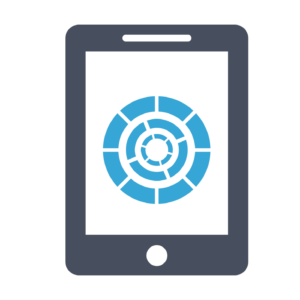What are you planning for? You can be in any business, developing a new enterprise, starting a new school semester, outlining next season’s athletic training program. Chances are strong that you need a plan to help keep you on track toward accomplishing your objectives.
Like many people, you sit down at your computer or at a desk and begin creating a typical, linear plan. That linear plan can extend into a seeming infinity and the farther you get away from the starting point, the more distant or disconnected the end may seem from the starting point. But it doesn’t have to be that way if you use a Planning Tool from plandisc.com.
 Plan in the Round
Plan in the Round
Consider taking your timeline or plan out of its traditional linear format and curving it into a circle. With plandisc.com planning tools, you do exactly that. Each planning tool is a fully customizable template-in-the-round. Select the template of your choice and start adapting it to your needs.
Name the cells, colorize them, and map out your plan within those cells by creating benchmarks, deadlines, and project phases. Know how each key point relates to the next key point day by week by month throughout the year (or whatever timeframe you establish).
Evolution of the Planning Tool
Planning tools, as we know them in business today, are attributed to research done after World War II and the Japanese business concept of “total quality control.” Over the decades the planning tools that were identified by this research have been modified and adapted many times and in many ways. But the root or purpose of the planning tool remains the same: to organize data and information into groups based on their natural relationships in order to visualize the steps involved in a project from start to completion.
Post-war planning tools typically took the form of linear timelines, tree diagrams, prioritization matrices, process decision charts, etc. Notice one point all of these traditional planning tools seem to have in common – their linear structure.
The advent of personal computers changed how we created our planning tools. We could plug data into software-based templates, turn timelines and tree diagrams into interactive presentations, and then print, publish, and distribute the resulting content when and wherever we chose.
The plandisc.com Planning Tool Difference
The difference between having a linear plan and a circular plan is more than a visual shift. When you map out your schedule or business plan in the round, you aren’t flipping pages or screens to get to the ending. You see it in the completed circle and your attention stays more focused.
Let’s say you choose January 2 as the starting point of a project and have 363 days in which to complete the project. Identify all the events and projects, meetings, testing, and whatever else is integral to completion of that project in the cells of the circular planning tool template. Every important element of your enterprise is contained in the circles and cells of your planning tool – all in one place, not separate pages or screen shots away. Your planning tool in the round is both a concise summary and a detailed map of how to get there. What a concise way of viewing your project or enterprise!
Planning Tools at Every Level
A plandisc.com planning tool can be used by anyone at any level of your enterprise. It is suitable to nearly any area of your business. Look to plandisc.com templates to provide the planning tools for your simplest and most complex planning needs. Map out your next big (or small) enterprise in the round.

